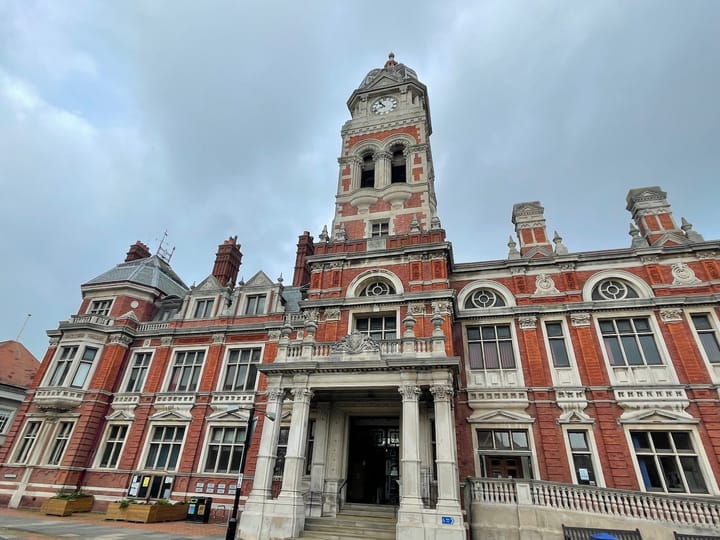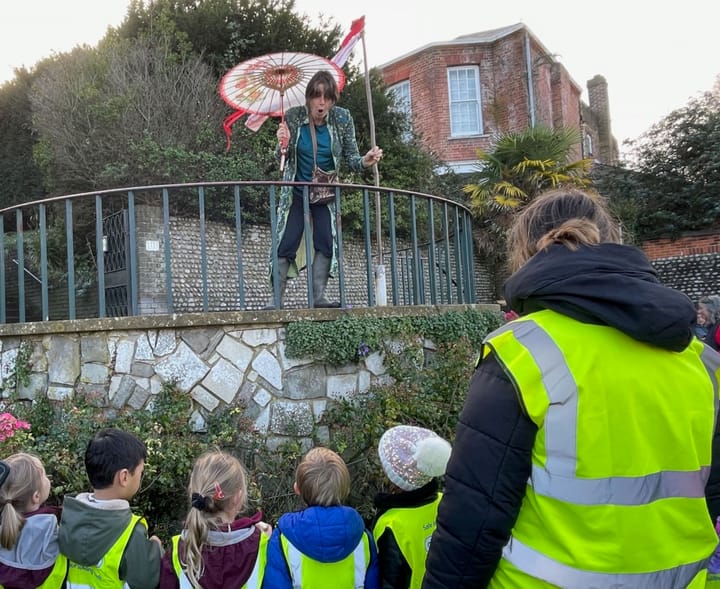How is the £11.5m Black Robin Farm project shaping up?
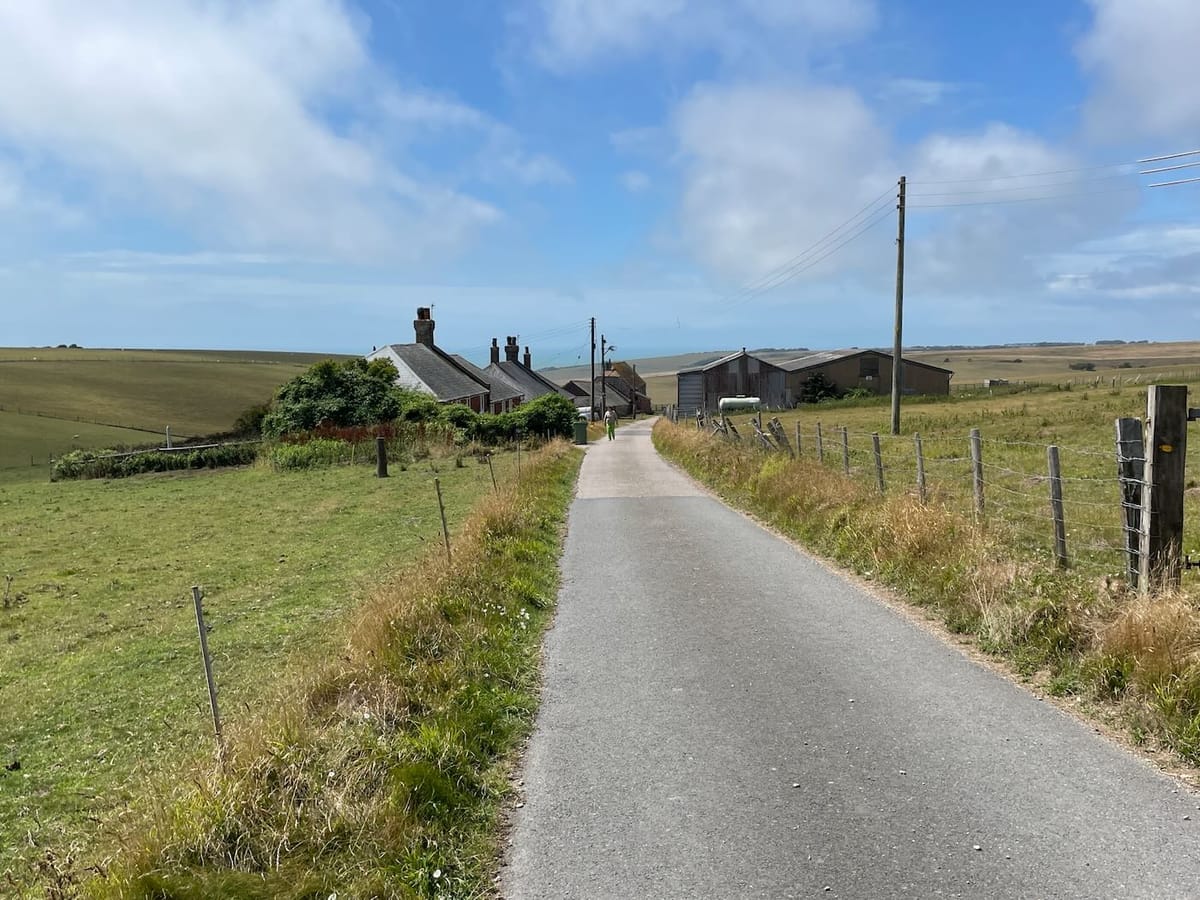
Work is set to start this autumn on the £11.5 million arts and education centre at Black Robin Farm on the South Downs overlooking Eastbourne. I met Towner CEO and director Joe Hill at the site to hear about his vision for the project – and how he hopes people will get there.
A cloud of starlings swirls above our heads, launching off overhead wires, their wings whispering as they turn as one across the fields.
The views to the English Channel are stunning and chalk grassland stretches away on all sides.
At the farm entrance, there is a spectacular view across Pevensey Bay as far as the boxy outlines of Dungeness power stations.
It is the landscape of Eric Ravilious and countless artists who have been inspired by the downland curves, skyscapes and the shimmering sea.
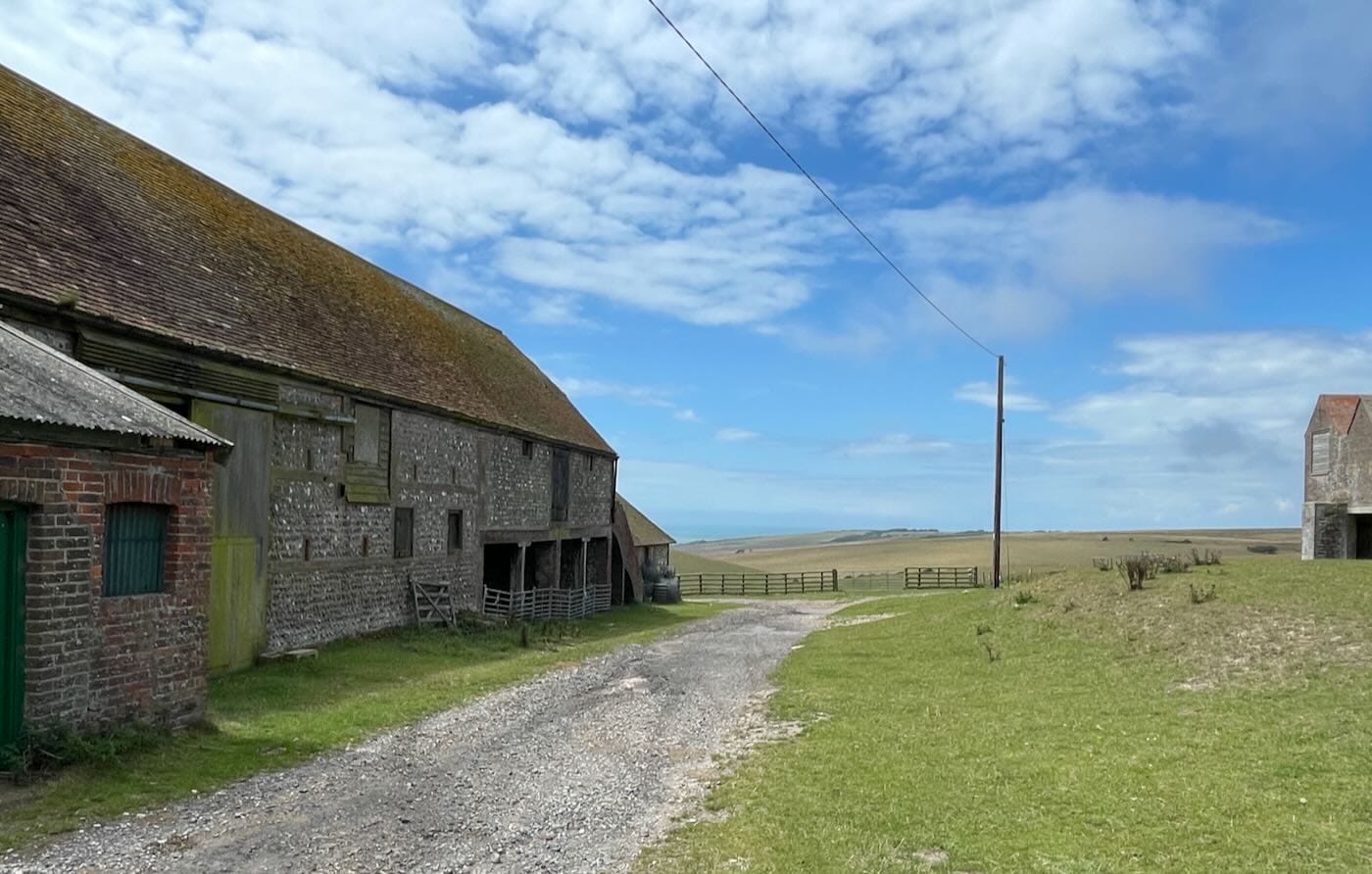
The site is in a secluded valley, barely visible from Beachy Head Road, on a 1,000-acre former dairy farm which comprises a farmhouse, milking parlour, cottages and barns.
All these buildings will remain and be repurposed, except for one barn which will have a new exhibition space on the same footprint.
As we stand there, Joe Hill explains that one of the starting points of the project was that Towner’s collection, which includes many Ravilious works, has a deep connection to this countryside.
“We were looking for a site to do something with artists out in the landscape. One of the things that struck me is how isolated it seems, yet how close to Eastbourne.
“It is one of those magical places which can become a gateway to the whole landscape.”
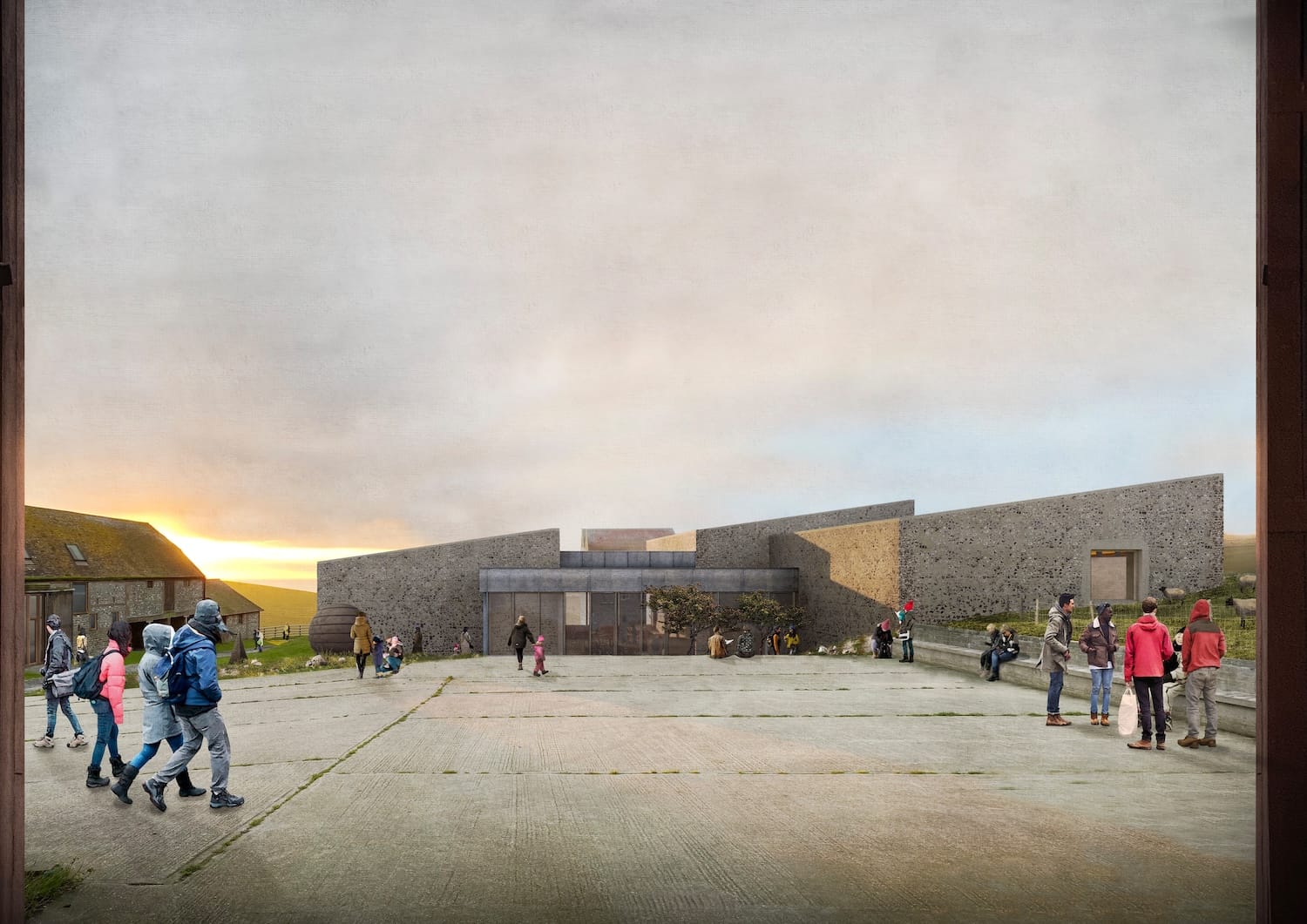
He is clear about what the Black Robin Farm development is not trying to achieve.
“We are not trying to recreate Towner up here. This brilliance of this site is as a farm: it’s not going to be a high-end art gallery,” he said.
“It’s about bringing together arts and culture with heritage and the environment and nature. This is a really innovative space to allow artists to be working with scientists, ecologists and archaeologists to create works for the public to see.”
Levelling Up money was secured four years ago for the project, which is being developed by Eastbourne Borough Council and will be run by the Towner gallery.
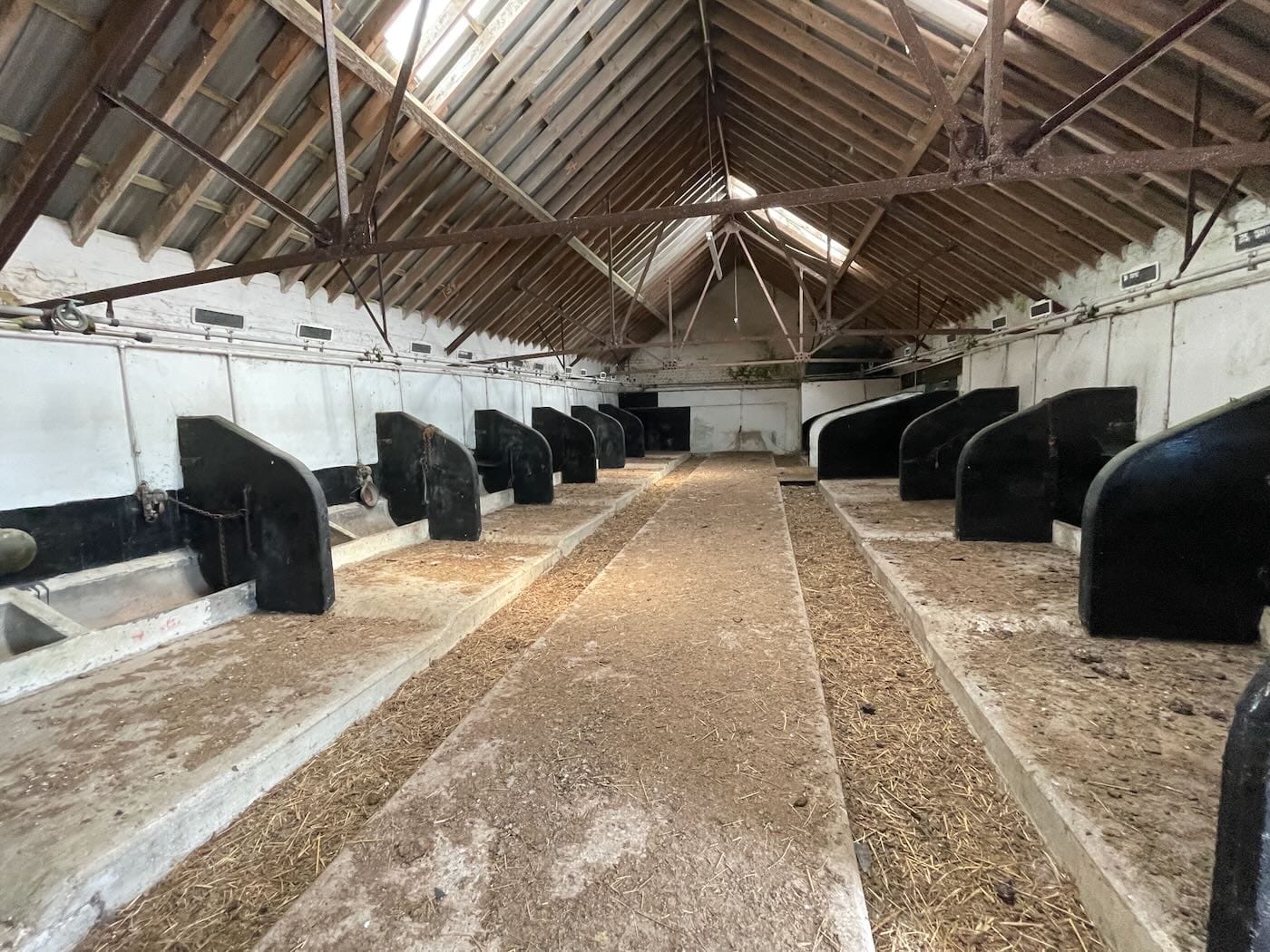
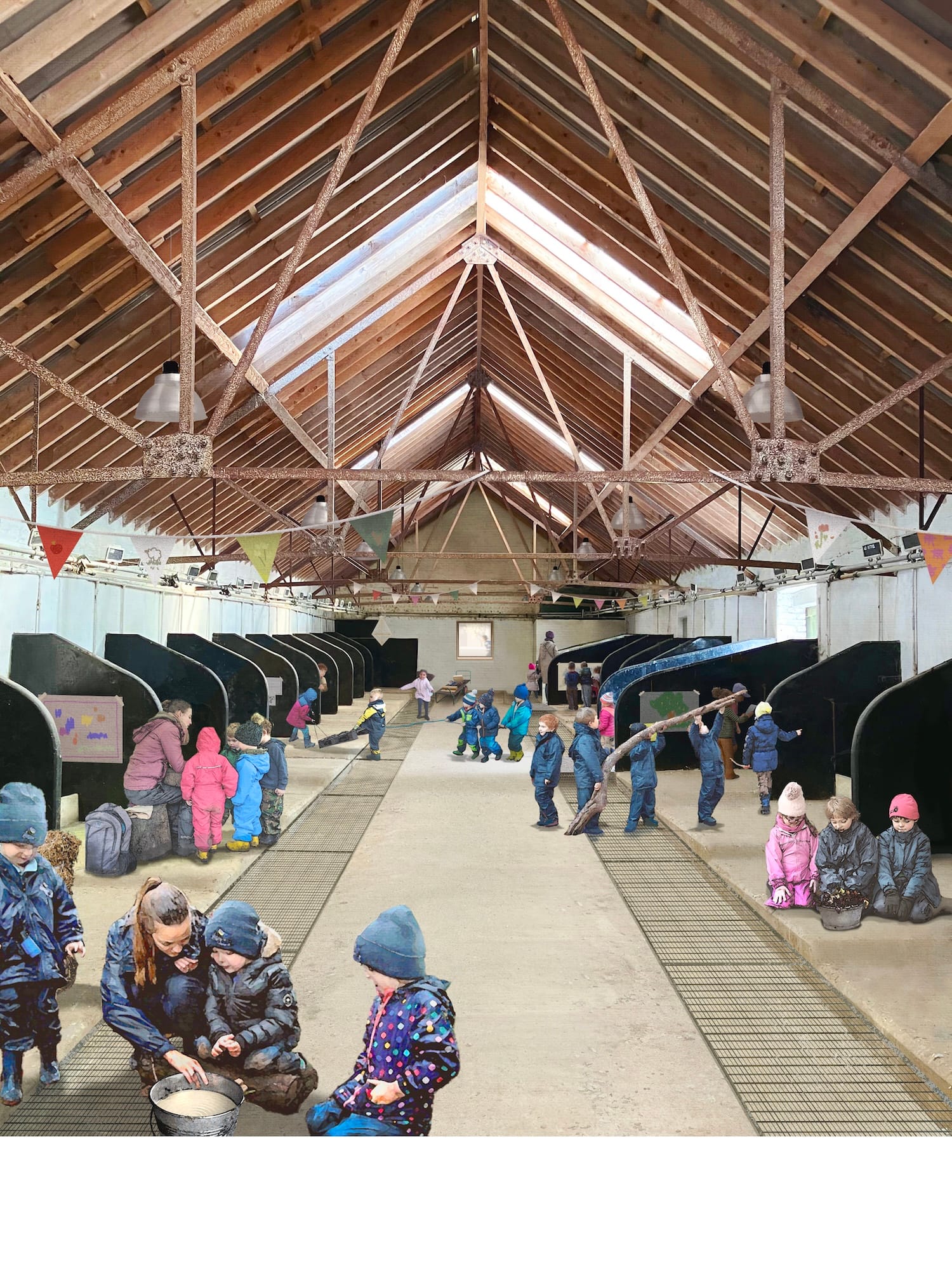
The milking parlour today (photo: Rebecca Maer / Eastbourne Reporter) and how it might look (image: Feilden Fowles)
The funding was clinched on the basis it was for a new project which would boost the local economy. Money could not be spent on existing projects, which ruled out sites such as the Redoubt fortress and the seafront bandstand.
The plans include:
- Studios for artists and makers in the farmhouse and neighbouring building
- An exhibition space on the site of an existing lambing barn, which will be dismantled for use elsewhere. This will be the only new building.
- Events and exhibitions in the existing large barn
- Classrooms and a teaching kitchen around an existing farmyard which will be used for outdoor learning
- A visitor centre, refectory and heritage museum in an existing flint barn
- A community garden for growing food
- A sensory garden
- Chalk farmland restoration in the wider area
Towner recently received £550,000 from the National Lottery Heritage Fund which will help develop plans for the visitor and heritage centre in the old flint barns.
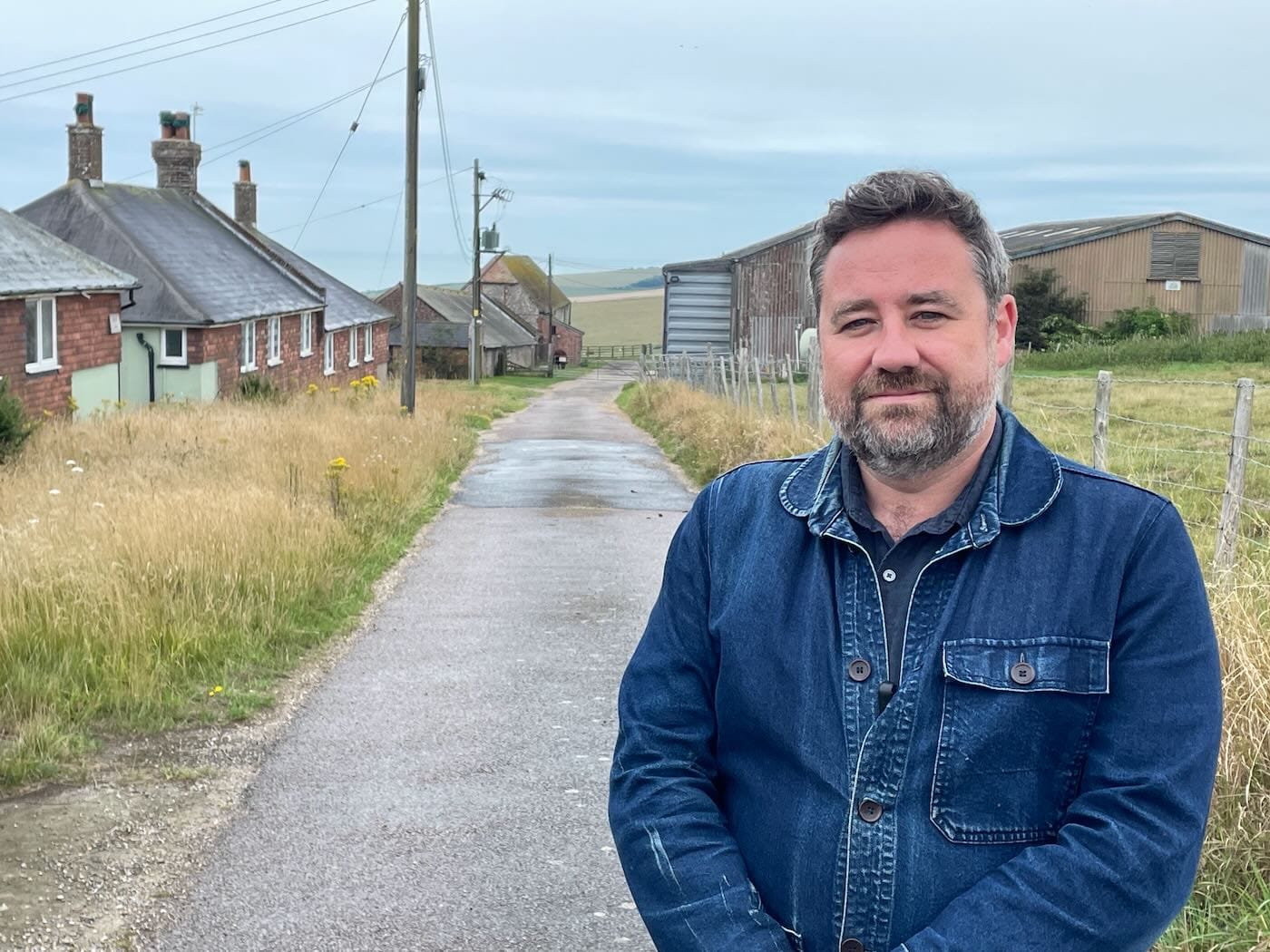
A meeting of the Downland Forum was held at Black Robin Farm recently, attended by some Eastbourne councillors, the South Downs National Park Authority and community groups.
Cllr Jim Murray, Eastbourne Borough Council Cabinet member for environmental issues, told the meeting that the original £11.5 million of funding would not stretch as far as when it was awarded in 2021. He said it was now effectively worth around £8.5 million because of inflation, notably the rises in costs of material and labour.
But he was upbeat on the prospects for the project: “We can get all the infrastructure in place then Towner can get additional funding for the projects within it. It is great this is happening.”
He added there should be “spades in the ground” in the autumn.
However, one of the main considerations will be how people will get there. Initial estimates suggested 100,000 visitors a year but that has since been scaled back, although no other figure has been made public.
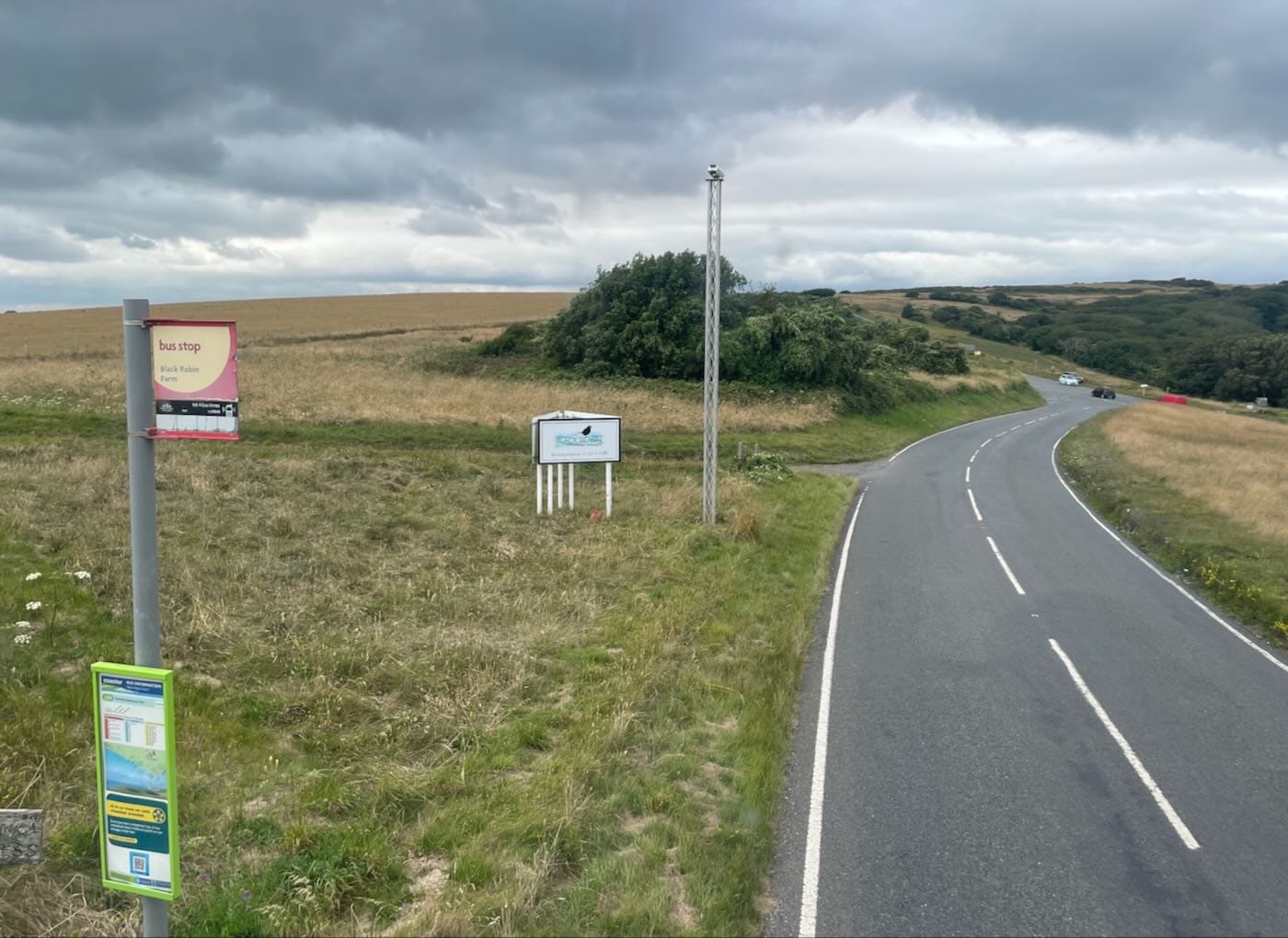
The Brighton and Hove Buses Coaster 13X service loops around Beachy Head and stops by Black Robin Farm but that is seasonal.
There will only be about 40 parking spaces on the site and the walk up from the town is strenuous.
Towner is considering expanding the Sussex Modern minibus service which links the gallery to rural areas such as Alfriston and Charleston, near Lewes.
But Joe believes the key is to overhaul transport for the whole area, improving access to Birling Gap and the Seven Sisters with much more frequent buses run by transport operators.

Large numbers of visitors from east Asia already flock to Birling Gap, made popular by singers like Jay Chou, whose video made on the cliffs ten years ago has had 16 million views.
Naomi Langford, the national park’s major projects officer, wrote in July 2023 in a response to the scheme’s planning application: “No commitments have been set out to test the effectiveness of any sustainable travel initiatives on the likely significant effect of transport activity at the site and in the local area...
“Vague references to discussions taking place and changes happening in the future in relation to sustainable travel are insufficient for these purposes.”
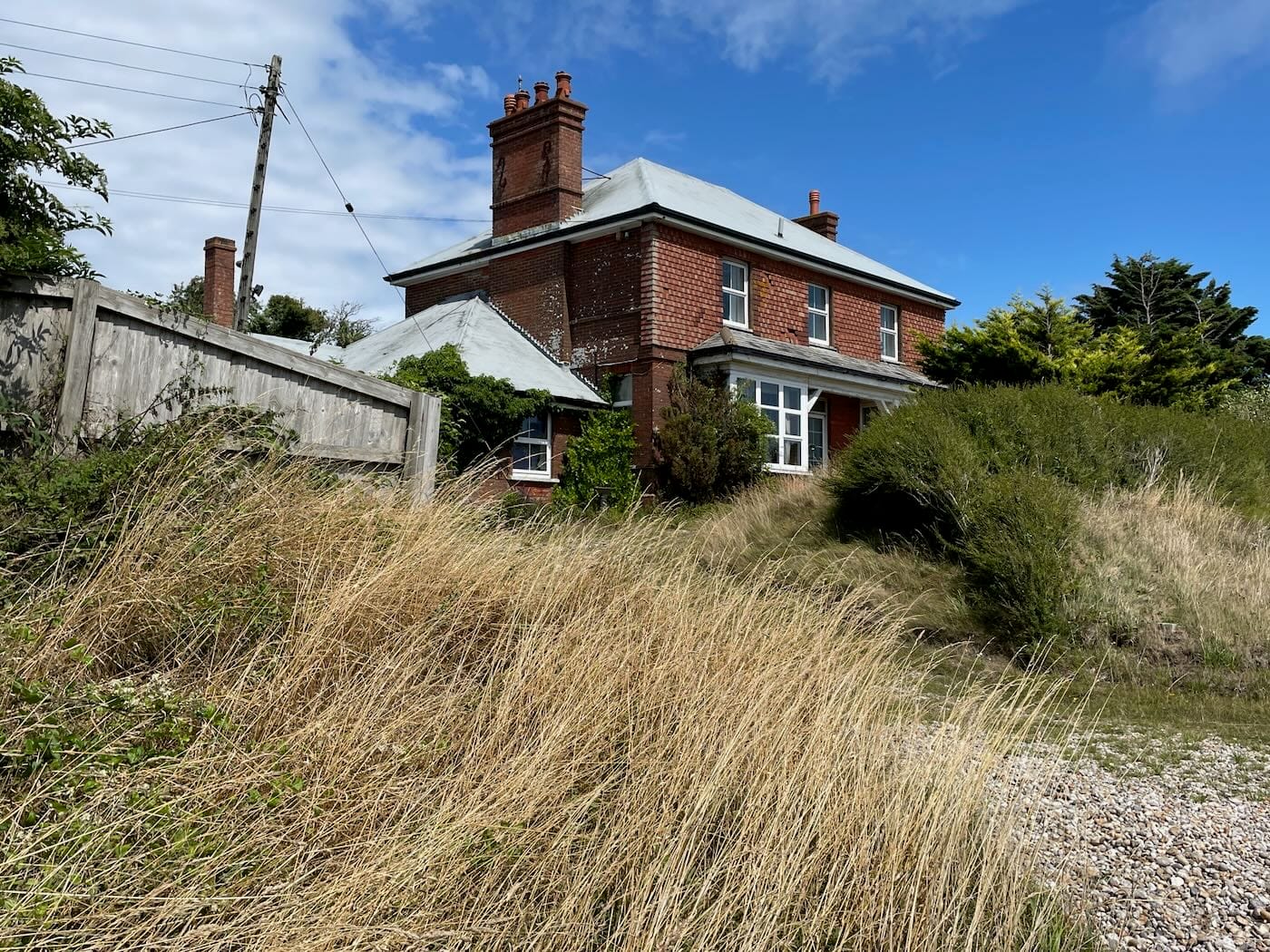
Joe Hill is optimistic: “The key to it is making the transport work. If it’s easy, people will use it.” Electric bikes and charging for electric vehicles will be in the mix.
There are also plans for a new network of pathways, connecting to existing footpaths to Birling Gap, with sculptures along the routes.
In the wider area, there are already volunteer groups meeting to clear paths and maintain the downland, co-ordinated by a countryside ranger.
There are also plans to put in permanent fences to allow grazing animals and encourage biodiversity by keeping brambles down.
The final overall branding for the project has yet to be decided but one thing is certain – the reinvented Black Robin Farm will keep its own name.
:: This type of genuine journalism - interviewing, research and asking questions - takes a lot of time: copying PR handouts and presenting them as 'news' takes seconds but is not journalism. Please support me – it’s free to read but not free to produce. One-off donations are here or become a member here for the price of a coffee just once a month. Reader support is vital.

